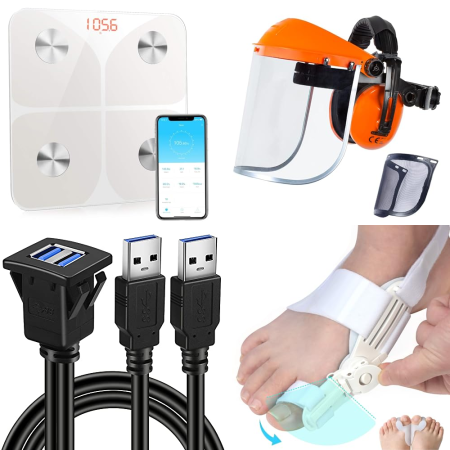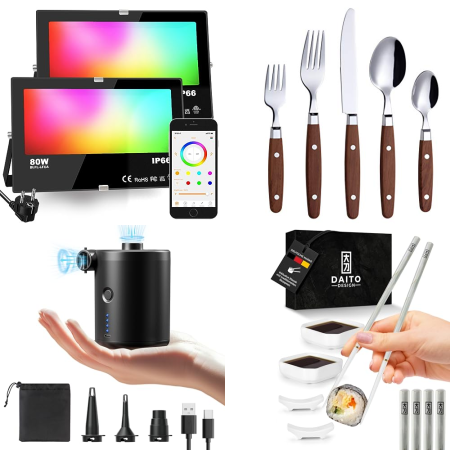|
⇒ Wusstest du, dass weniger als 9 % der globalen Wirtschaft tatsächlich kreislauforientiert ist? Das bedeutet, dass über 90 % dessen, was wir produzieren, nur einmal genutzt und dann entsorgt wird. |
Die Welt bewegt sich weg vom „nehmen-herstellen-entsorgen“-Modell hin zu einer Kreislaufwirtschaft. Es passiert bereits. In diesem Artikel erfährst du, wie das sogenannte Recommerce (der Wiederverkauf, die Wiederverwendung und Aufarbeitung von Waren) in das größere Bild der Ressourceneffizienz und Nachhaltigkeit passt. Du erhältst Einblicke in die Grundprinzipien der Kreislaufwirtschaft, die wirtschaftlichen Vorteile von Recommerce, reale Beispiele, Strategien zur Umsetzung und wie man häufige Herausforderungen überwindet. Am Ende bist du mit umsetzbaren Ideen ausgestattet, um diese Konzepte in dein Unternehmen zu integrieren.
Vom linearen zum zirkulären Denken: Warum ein Umdenken notwendig ist
Historisch gesehen verließen sich viele Unternehmen auf das lineare Modell:

Doch mit zunehmender Ressourcenknappheit, Abfallproblemen und sich ändernden Verbraucheranforderungen wenden sich Unternehmen einem zirkulären Denken zu. Sie fragen sich:
Wie kann dieses Produkt viele Leben haben?
Wie können Materialien länger im Umlauf bleiben?
In einer Kreislaufwirtschaft werden Produkte und Materialien von Anfang an so gestaltet, dass sie wiederverwendet, repariert, aufgearbeitet und letztlich recycelt werden können. So bleibt alles so lange wie möglich in Gebrauch.
Schlüsselstatistiken untermauern die Dringlichkeit, da die Ressourcengewinnung und -verarbeitung über 55 % der globalen Treibhausgasemissionen ausmachen. Wenn Unternehmen ihre Lieferketten und Produktlebenszyklen auf zirkulär umstellen, können sie Abfall reduzieren, Rohstoffe schonen und Umweltschäden vermeiden.
Was ist Recommerce und wie passt es dazu?
Recommerce (auch als Reverse Commerce bekannt) bedeutet, zurückgegebene, überschüssige, gebrauchte oder aufgearbeitete Artikel zu verkaufen, anstatt sie wegzuwerfen. Es ist ein praktischer Einstieg in die Kreislaufwirtschaft, da es die Lebensdauer von Produkten verlängert und Wert zurückgewinnt.
Hier eine vereinfachte Tabelle, die zeigt, wie Recommerce mit den Prinzipien der Kreislaufwirtschaft verknüpft ist:
|
Prinzip der Kreislaufwirtschaft |
Rolle von Recommerce |
|
Reduzieren |
Weniger neue Artikel müssen hergestellt werden, wenn gebrauchte Artikel weiterverkauft werden. |
|
Wiederverwenden / Aufbereiten |
Produkte erhalten ein neues Leben, oft durch Inzahlungnahme, Aufarbeitung oder Wiederverkauf. |
|
Recyceln |
Wenn Wiederverwendung nicht möglich ist, werden Materialien für neue Verwendungen gewonnen. |
Beispiel: Die Lebensdauer eines Kleidungsstücks nur um neun Monate zu verlängern, kann dessen CO₂-, Wasser- und Abfall-Fußabdruck um etwa 20–30 % reduzieren.
Kurz gesagt: Statt wegzuwerfen oder zu verschwenden, einfach diese drei Schritte befolgen:
|
Waschen ⇒ Reparieren ⇒ Wiederverkaufen |
Unbedingt Lesen:
Warum Unternehmen Recommerce annehmen sollten
Es gibt starke geschäftliche Argumente dafür, nicht nur umwelttechnische.
- Neue Einnahmequellen
Was früher ein Kostenfaktor war (Rücksendungen, überschüssiger Lagerbestand), wird zur Einnahmequelle, wenn Artikel weiterverkauft werden. Einige Analysen zeigen, dass effiziente Recommerce-Betriebe 15–30 % höhere Margen erzielen können als bei Massenverkäufen. - Kosteneinsparungen
Weniger Abfall bedeutet geringere Entsorgungskosten und weniger Lagerbelastung. Auch durch die Wiederverwendung von Materialien oder die Aufarbeitung von Waren verringern Unternehmen die Nachfrage nach der Herstellung neuer Einheiten. - Markentreue und Image
Verbraucher, insbesondere jüngere Generationen, legen Wert auf Nachhaltigkeit. Eine Umfrage ergab, dass 80 % einer Gruppe Second-Hand-Produkte kauften, um Abfall zu reduzieren. Wenn eine Marke Rücknahme-, Aufarbeitungs- oder Wiederverkaufsprogramme anbietet, signalisiert sie Umweltverantwortung und kann das Kundenvertrauen stärken. - Regulatorische und Lieferketten-Resilienz
Hersteller, die zirkuläre Modelle übernehmen, sind besser auf Lieferketten-Schocks (z. B. Ressourcenengpässe, Zölle) und regulatorische Anforderungen bezüglich Abfall oder Produktlebenszyklen vorbereitet.
Unbedingt lesen:
Wie Unternehmen Recommerce umsetzen – Wichtige Strategien
Hier sind praktische Möglichkeiten, wie Unternehmen Recommerce in die Praxis umsetzen:
- Eigene Wiederverkaufsplattformen: Marken schaffen ihre eigenen Wiederverkaufskanäle (intern oder mit Partnern), um gebrauchte Artikel zu verkaufen, anstatt sie an Drittanbieter zu übergeben. Beispiel: IKEA’s „Buy Back & Resell“-Programm für Möbel.
- Inzahlungnahme- / Rücknahmeprogramme: Unternehmen bieten Kunden Gutschriften oder Rabatte für die Rückgabe alter Artikel an. Beispiel: Elektronikunternehmen, die gebrauchte Geräte annehmen und aufbereiten/wiederverkaufen.
- Aufarbeitungs- & Reparaturbetriebe: Nach der Sammlung werden Artikel gereinigt, repariert und getestet, um Qualitätsstandards zu erfüllen. So werden sie von „gebraucht“ zu „zertifiziert gebraucht“.
- Remanufacturing & Teile-Rückgewinnung: In der Schwerindustrie oder Elektronikbranche retten Unternehmen gebrauchte Einheiten, gewinnen Komponenten oder bauen sie auf Neuspezifikationen um, wodurch der Verbrauch neuer Materialien reduziert wird.
- Peer-to-Peer- & Kommissionsmodelle: Marken erleichtern den Wiederverkauf, lassen Verbraucher jedoch selbst Artikel auflisten (Kommission) oder untereinander unter dem Markennamen tauschen. Beispiel: Patagonias „Worn Wear“-Programm.
Reale Beispiele, von denen du lernen kannst
Hier sind drei Unternehmen, die den Weg weisen:
- Patagonia – Worn Wear: Patagonia ist eine Outdoor-Bekleidungsmarke, die gebrauchte Kleidung annimmt, sie repariert und dann weiterverkauft. Dies verlängert die Lebensdauer hochwertiger Kleidungsstücke und stimmt mit ihrer Mission überein.
- IKEA – Buy Back & Resell: IKEA ist ein Möbelhändler. Sie bieten Kunden Store-Gutschriften für sanft gebrauchte Möbel und verkaufen die Artikel in einem speziellen Bereich (“Circular Hub”) weiter.
- Dell – Aufbereitete Computer: Im Technologiesektor bereitet Dell zurückgegebene oder abgelaufene PCs für den Wiederverkauf auf und reduziert so Elektroschrott und vermeidet die Gewinnung neuer Rohstoffe.
Diese Beispiele zeigen, dass Recommerce nicht auf einen Bereich beschränkt ist. Es umfasst alles von Mode und Möbeln bis hin zu Elektronik und Schwerindustrie.
Herausforderungen überwinden & Erfolg sicherstellen
Natürlich ist der Einstieg in Recommerce nicht ohne Hürden. Hier sind die wichtigsten Herausforderungen und wie man sie angeht:
- Qualität & Kundenvertrauen: Kunden könnten befürchten, dass gebrauchte Waren von minderer Qualität sind. Klare Bewertungsstandards, Garantien oder Rückgaberechte sowie transparente Produktbeschreibungen können diese Bedenken ausräumen.
- Logistik & Prozesskomplexität: Die Handhabung von Rücksendungen und gebrauchten Artikeln ist viel komplexer als bei neuen Artikeln. Es werden Rückwärtslogistik, Inspektion, Sortierung und Aufarbeitungsabläufe benötigt. Technologie (KI, Tracking-Systeme) hilft dabei.
- Kannibalisierung von Neuwarenverkäufen: Einige Marken befürchten, dass der Wiederverkauf gebrauchter Artikel den Verkauf neuer Artikel verringern könnte. Viele Analysen zeigen jedoch, dass Recommerce unterschiedliche Kundensegmente anspricht. Es sind meist preisbewusste oder umweltbewusste Käufer. Es kann den Neuwarenverkauf ergänzen, anstatt ihn zu ersetzen.
- Skalierung & Integration: Recommerce sollte nicht als kleines Nebenprojekt betrachtet werden. Um einen echten Unterschied zu machen, muss es Teil des Hauptgeschäftsplans sein. Vom Design von Produkten, die repariert werden können, bis hin zur Änderung der Art und Weise, wie das Unternehmen Geld verdient – stelle sicher, dass jedes Team auf dasselbe Ziel hinarbeitet.
Schritte zum Start eines Recommerce-Programms
Wenn du planst, Recommerce in dein Unternehmen zu integrieren, hier eine praktische Mini-Roadmap:
- Audit deines Produktkatalogs – Identifiziere, welche Artikel gut für Wiederverwendung/Wiederverkauf geeignet sind (haltbar, guter Wiederverkaufswert, reparierbar).
- Einrichtung der Rückwärtslogistik – Entscheide, wie gebrauchte Artikel gesammelt, inspiziert, bewertet, aufgearbeitet oder recycelt werden.
- Definiere dein Wiederverkaufs- / Rücknahmeangebot – Bietest du Gutschriften an? Rabatte? Verkaufst du über deine eigene Plattform oder einen Partner?
- Setze Produktdaten- und Bewertungsstandards – Sei konsistent in Bezug auf Zustand, Aufarbeitungsstufen, Garantien.
- Kommuniziere klar mit Kunden – Hebe die Vorteile hervor: Einsparungen, Nachhaltigkeit, Wert. Vertrauen ist entscheidend.
- Verfolge Kennzahlen – Einnahmen aus Wiederverkauf, Rücklaufquoten, sogar CO₂-/Abfallreduzierungen. Nutze diese, um zu verfeinern und zu skalieren.
- Iteriere & integriere – Lerne, was funktioniert, skaliere die erfolgreicheren Teile und integriere Erkenntnisse in Produktdesign und -herstellung.
Schnellübersicht: Vorteile vs. Herausforderungen
|
Vorteil |
Zugehörige Herausforderung |
|
Neue Einnahmequelle |
Notwendigkeit von Aufarbeitungs- und Bewertungs-Kosten |
|
Reduzierter Abfall und Materialverbrauch |
Komplexität der Rückwärtslogistik |
|
Verbesserte Markenreputation |
Angst vor Qualität von Gebrauchtwaren |
|
Resilienz gegenüber Lieferketten-Schocks |
Erforderliche organisatorische Veränderungen |
Interessante Fakten
|
Fazit
Recommerce geht über das Schlagwort Nachhaltigkeit hinaus. Es stellt eine starke Geschäftsmöglichkeit dar.
Wenn Unternehmen vom „Herstellen–Verkaufen–Entsorgen“-Modell auf „Herstellen–Nutzen–Wiederverwenden“ umstellen, schonen sie Ressourcen, reduzieren Abfall und eröffnen neue Einnahmequellen. Durch die Einführung von Recommerce und die Integration in Produktdesign, Betriebsabläufe und Kundenerfahrung können Unternehmen Resilienz, Zweck und Profitabilität fördern. Die Kreislaufwirtschaft ist die beste Option, um aus Abfall Gewinn zu erzielen.
FAQs
Q1: Welche Produkte eignen sich am besten für Recommerce?
A: Langlebige Waren mit hohem Wiederverkaufswert eignen sich besonders, z. B. Elektronik, Möbel, Modeartikel, Industriekomponenten. Produkte, die für Reparaturen oder Modularität ausgelegt sind, sind ideal.
Q2: Kann der Wiederverkauf gebrauchter Produkte den Verkauf neuer Produkte kannibalisieren?
A: Nicht unbedingt. Viele Studien zeigen, dass Recommerce andere Kundensegmente anspricht (preisbewusst oder umweltorientiert). Rücknahmeprogramme können zudem neue Käufe fördern, indem Kunden beim Zurückgeben Gutschriften erhalten.
Q3: Geht es bei Recommerce nur um Wiederverkauf?
A: Nein, es umfasst auch Aufarbeitung, Rücknahme, Buy-Back, Miet-/Leasingmodelle und „Product-as-a-Service“. All dies verlängert die Produktlebenszyklen und unterstützt die Kreislaufwirtschaft.
Q4: Was sind die größten Hürden für eine erfolgreiche Recommerce-Strategie?
A: Wichtige Herausforderungen sind Logistik für Sammlung/Inspektion gebrauchter Artikel, Sicherstellung gleichbleibender Qualität, Aufbau von Aufarbeitungsprozessen, Daten- und Systemschnittstellen für Bewertung und Wiederverkauf sowie die organisatorische Anpassung an zirkuläre Modelle.
Q5: Welche Kennzahlen sollte ich für Recommerce verfolgen?
A: Nützliche Kennzahlen sind: Prozentsatz der für Wiederverkauf genutzten Rücksendungen, durchschnittliche Wiederverkaufsmarge vs. Liquidation, Anzahl aufbereiteter Artikel, Abfallvermeidung, CO₂-/Materialeinsparungen und Wiederholungskäufe von Wiederverkaufskunden.









